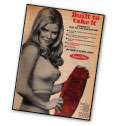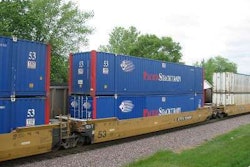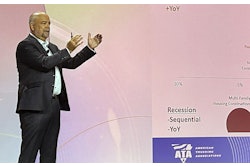The seventh in a series of quick peeks into the world of commercial vehicles through the lens of Commercial Carrier Journal
Retrospective — 1970 – 1979
Sowing the seeds of deregulation
When President Roosevelt signed the Motor Carrier Act of 1935, he did so to protect the fledgling industry from cutthroat competition. With the passage of the law, the Interstate Commerce Commission had the sole authority to determine which carriers could operate interstate, what services they could offer and what rates they could charge.

Motor carriers had to file rate tariffs 30 days before they became effective. The information was made public, allowing competitors to inspect the filed tariffs and protest their legality. The ICC normally would suspend the rates pending an investigation, which for years stifled competition.
Carriers and even the Teamsters union believed ICC regulation was essential. By the late 1970s, however, both political parties supported legislation to deregulate the trucking industry. In 1975 and 1976, the Ford administration proposed a number of changes under the Motor Carrier Reform Act, which never passed. The American Trucking Associations decided to support Jimmy Carter for president based on promises given by a top Carter campaign manager that no deregulation would occur in a Carter administration. The Ford campaign offered no such guarantee.
Once in power in 1977, the Carter administration viewed deregulation as a cure for runaway inflation. By reducing artificially high shipping costs, officials believed they could lower prices on consumer goods. The administration also viewed deregulation as essential for conserving national energy resources by reducing empty hauls. Sen. Ted Kennedy (D-Mass.) also led the charge to eliminate the exemption of rate bureaus from anti-trust prosecution.
In 1978, deregulation was all but certain. The ICC announced a limit to motor carriers’ return on equity to 14 percent, thus limiting rate increases. The ICC also reaffirmed its decision to allow private carriers to obtain common carrier authority and issued a proposal that would make competition the primary consideration in considering new applications.
“I am utterly dismayed at the abysmal lack of knowledge displayed by the people who are making these decisions,” said Bennett Whitlock, ATA president, in a 1978 interview with CCJ. “Collective ratemaking is what holds our entire transportation system together. Without it, there would be absolute chaos.”
The regulations keep coming
Federal agencies passed a number of regulations in the mid-1970s. The Federal Motor Vehicle Safety Standard 121 – often referred to as DOT 121 – went into effect in mid-1975. The intent of the new rule was to require air-brake vehicles to stop in substantially shorter distances and to ensure straight-line stops without the vehicle leaving its lane and/or jackknifing. Truck manufacturers claimed that DOT 121 forced them to increase truck prices, which had a catastrophic effect on truck sales in 1975; sales fell by more than 50 percent for some companies. Technologically, however, the rules were an even bigger disaster and were set aside until the systems matured.
The U.S. Environmental Protection Agency adopted tough new emissions standards for diesel engines for 1975 models. The new rules were the first time limits were put on permissible levels of hydrocarbons and carbon monoxide. Each was reduced by more than 30 percent of then-current levels. EPA also reduced diesel smoke emissions by 50 percent during acceleration and 25 percent during uphill climbs.
Stemming from a national energy crisis, the national 55-mph speed limit became law in 1974.
Where do fuel tanks belong?
In January 1978, CCJ reported that a Dallas jury awarded $10.1 million to the surviving daughter of a San Antonio couple. The Texas couple burned to death after their 10-year-old truck overturned and caught fire.

In the article, CCJ quoted an executive from a truck dealership in Texas. Redesigning trucks to relocate the fuel tanks, the dealer said, would “mean more inflation. I just don’t know where in the hell you would put the tanks.”
The same plaintiff attorney said he had two other multimillion-dollar suits scheduled against truck manufacturers. “I predict we’ll see some changes in their truck designs before too long. That’s all I’m after.”
Upper-middle class drivers


Perhaps coinciding with the sexual revolution of the late ’60s and early ’70s, many of the advertisements were designed to appeal to more than just an executive’s business sense, such as this 1972 ad from Signal-Stat lights. n












